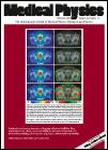版权所有:内蒙古大学图书馆 技术提供:维普资讯• 智图
内蒙古自治区呼和浩特市赛罕区大学西街235号 邮编: 010021

作者机构:Newcastle Upon Tyne Hosp NHS Fdn Trust Northern Ctr Canc Care Newcastle Upon Tyne NE7 7DN Tyne & Wear England RaySearch Labs AB PUBL POB 3297 SE-10365 Stockholm Sweden
出 版 物:《MEDICAL PHYSICS》 (医疗物理学)
年 卷 期:2020年第47卷第10期
页 面:4758-4762页
核心收录:
学科分类:1001[医学-基础医学(可授医学、理学学位)] 1009[医学-特种医学] 10[医学]
主 题:atlas-based segmentation bulk density assignment magnetic resonance MRI-only based radiotherapy prostate patients VMAT
摘 要:Purpose This study investigates the dosimetric accuracy as well as the robustness of a bulk density assignment approach to magnetic resonance imaging (MRI)-only based treatment planning of the prostate, with bulk density regions automatically identified using atlas-based segmentation (ABS). Methods Twenty prostate radiotherapy patients received planning computed tomography (CT) and MRI scans and were treated with volumetric modulated arc therapy (VMAT). Two bulk densities were set, one for bone and one for soft tissue. The bone contours were created by using ABS followed by manual modification if considered necessary. A range of soft tissue and bone density pairs, between 0.95 and 1.03 g/cm(3)with increments of 0.01 for soft tissue, and between 1.15 and 1.65 g/cm(3)with increments of 0.05 for bone, were evaluated. Using the density pair giving the lowest dose difference compared to the CT-based dose, dose differences were calculated using both the manually modified bone contours and the bone contours from ABS. Contour overlap measurements between the ABS contours and the manually modified contours were calculated. Results The dose comparison shows a very good agreement with the CT when using 0.98 g/cm(3)for soft tissue and 1.20 g/cm(3)for bone, with a dose difference less than 1 % in average dose in all regions of interest. The mean Dice similarity coefficient for bone was 0.94 and the Mean Distance to Agreement was Using bulk density assignment on MR images with suitable densities for bone and soft tissue results in clinically acceptable dose differences compared to dose calculated on the CT, for both atlas-based and manual bone contours. This demonstrates that an integrated MRI-only pathway utilizing a bulk density assignment for two tissue types is a feasible and robust approach for patients with prostate cancer treated with VMAT.